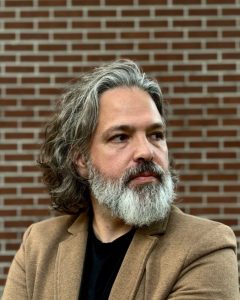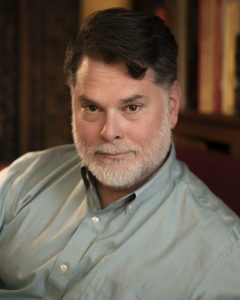WS101: The Beauty and the Horror
An Education in Dreadful Wonder
This course concluded in July 2024 and is now self-paced.
In Reclaiming Art in the Age of Artifice, J.F. Martel wrote that there is a “radical beauty” that attains the most intense expression precisely when it mixes in a bit of death and impermanence. “If the music of Bach is more moving than elevator Muzak even though both follow the same basic principles, it is because Bach gave harmony a dizzyingly precarious existence. He made it teeter perpetually on the brink of dissolution. Bach knew that pleasant melodies weren’t enough to make art; for real beauty to emerge, the unthinkable had to be given its due.”
Think of runway models whose comeliness carries a hint of strangeness –– angelic faces out of whose depths, in a certain light, from a certain angle, there might gleam something of the mantis or the reptile. Or think of Ralph Ellison’s conceit of “Optic White,” a paint whose pristine whiteness is attained with a single drop of black. Which might put you in mind of the Yin-Yang symbol, where dark Yin and light Yang each have a drop of its opposite and complement. These primordial forces of Yin and Yang are the archetypes of horror and beauty, which likewise twine around one another endlessly. At any moment, a turning crystal of spacetime might show us the beautiful reversing into the horrific, and the horrific into the beautiful. “For beauty,” wrote the poet Rainer Maria Rilke,
is nothing but the beginning of terror, which we can still barely endure, and while we stand in wonder it coolly disdains to destroy us. Every Angel is terrifying.
What madness is this?
THE BEAUTY AND THE HORROR will chase its motions through several of Phil and J.F.’s favorite artworks: music, poetry, film, fiction, comics, philosophy (hey, philosophy is art too), and more. In each session, their task will be to locate the two aesthetic polarities and triangulate that point where they conjoin. It’s going to be an eclectic class: wide-ranging, unpredictable, experimental, and hopefully unforgettable.
Schedule
This course concluded in July 2024 and is now self-paced.
Why Take This Course?
Students will get to:
- Walk the metaphysical borderlands where our categories fail to capture the fullness of aesthetic experience.
- Explore ten singular artworks, any of which might have made for a memorable episode of Weird Studies.
- Gain permanent access to recordings of the lectures and discussions.
- Get to post, share, discuss, and exchange direct messages with the instructors and other students on the Weirdosphere platform.
- Become full-fledged members of a new online learning community, with a permanent discount on all future Weirdosphere classes by Phil Ford, J.F. Martel, and other thinkers of things strange and astonishing.
Instructor Bio

J.F. Martel is a Canadian author, filmmaker, lecturer, and cultural critic known for his work on the arts, philosophy, and the uncanny. With a background in film production and an interest in metaphysics, Martel explores the intersections of creativity and the ineffable, challenging conventional boundaries of understanding. He is best known for his book Reclaiming Art in the Age of Artifice, which argues for the intrinsic value of art beyond commodification and utilitarianism. Martel’s writings often appear in various publications, where he discusses the spiritual and existential dimensions of culture. As a filmmaker, he has directed several documentaries and short films. Through his work, Martel invites audiences to reconsider their perceptions of reality and embrace the mysteries that lie beneath the surface of the workaday world. He co-hosts the Weird Studies podcast with the music historian Phil Ford.

Phil Ford (Ph.D. University of Minnesota, 2003) is an associate professor of musicology at the Indiana University Jacobs School of Music. He has also taught at Stanford University and the University of Texas at Austin. His work has dealt especially with postwar American culture and music (jazz, pop, film music, the avant-garde), as well as sound, musical performance, philosophies of experience, and the intellectual history of counterculture. He is the author of Dig: Sound and Music in Hip Culture (Oxford University Press, 2013) and has published essays in Representations, Journal of Musicology, Musical Quarterly, and elsewhere. He was the founder and lead writer for the blog Dial ‘M’ for Musicology, which ran from 2006 to 2018, and nowadays co-hosts an arts and philosophy podcast, Weird Studies, with philosopher J. F. Martel. His current work concerns magical and contemplative styles of thought, feeling, and experience in various contexts, musical and otherwise.